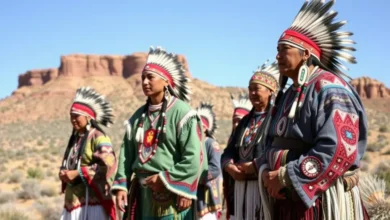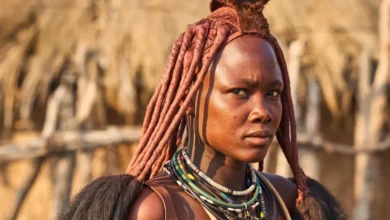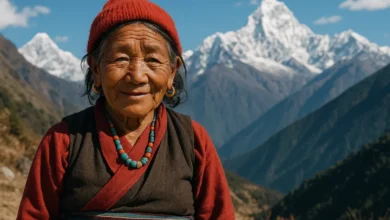Step Into the World of Plains Indian Fashion
Picture this: endless golden plains stretching beneath a big sky, thundering bison herds kicking up dust, and the vibrant lives of the Plains Indians unfolding in harmony with nature. For tribes like the Lakota, Cheyenne, and Crow, the bison wasn’t just a meal—it was a cornerstone of their world.

Among its many gifts, bison hides became the foundation for clothing that was tough, warm, and stunningly beautiful.
In this article, we’ll explore how these resourceful people transformed rugged hides into garments that shielded them from the elements, showcased their artistry, and honored their bond with the land. So, pull up a comfy chair—let’s journey into the fascinating tale of bison hide clothing!
The Bison: Nature’s All-in-One Resource
Before we dive into the wardrobe, let’s meet the MVP: the bison. These shaggy giants once roamed the Great Plains in mind-boggling numbers—tens of millions strong—fueling the lives of Plains Indians for centuries. A single bison offered meat for feasts, bones for tools, and, crucially, hides for clothing. These weren’t flimsy fabrics; bison hides were thick, durable, and naturally insulating—perfect for a nomadic life in a land of scorching summers and brutal winters.
See also The Women of the Himba Tribe: Guardians of Tradition in Namibia’s Arid Heartland
The Women of the Himba Tribe: Guardians of Tradition in Namibia’s Arid Heartland
The Plains Indians wasted nothing. After a hunt, every part of the bison had a purpose, reflecting a deep respect for the animal and the ecosystem. The hides, especially, were prized—softened into supple leather for summer wear or left furry for cozy winter gear. How did they turn these raw hides into wearable masterpieces? Let’s unpack the process.
From Hide to Haute: The Art of Preparation
Crafting bison hide clothing wasn’t a quick chore—it was a skilled, hands-on ritual that blended practicality with tradition. After a hunt, the transformation began, often with men skinning the bison and women stepping in as the expert tanners and sewers. Here’s how they did it.

Scraping Away the Rough Stuff
First, the hide was stretched taut and pegged to the ground. Using tools like bone scrapers or sharpened stones, they meticulously removed fat, flesh, and hair (if needed). This wasn’t glamorous work—think hours of elbow grease under the sun—but it was essential. A clean hide meant no rot, no stench, just a blank canvas ready for the next step.
Tanning: Brains and Beauty
Now came the magic: tanning. The go-to method was brain tanning, where the bison’s own brain was mashed into a paste and worked into the hide. It might sound odd, but those brains were packed with oils that softened the leather, turning stiff hides into flexible fabric. After soaking, stretching, and sometimes smoking over a smoldering fire, the hide emerged either velvety smooth or smoky and weather-resistant. Smoking also added a warm, woody aroma—a bonus perk!
See also The Yoruba People of West Africa
The Yoruba People of West Africa
This wasn’t solitary work. Women often gathered to tan hides, chatting and singing as they went, weaving community into every stitch. The result? Bison hides ready to become everything from breezy tunics to toasty robes.
Everyday Essentials: Clothing for Life on the Plains
Once prepped, bison hides became the building blocks of daily wear—garments that balanced function with a touch of flair. The Plains’ wild weather demanded versatility, and these clothes delivered. Let’s peek into the wardrobe.
Men’s Tunics and Leggings: Rugged and Ready

Men sported tunics, long shirts crafted from two hides sewn together, reaching the thighs. Paired with leggings tied at the waist, these outfits were ideal for riding horses or stalking game. Tanned smooth, the hides were light enough for summer hunts but could layer up with fur for fall chills. Fringes—those iconic dangling strips—added style and shed water, while painted designs or quillwork turned them into personal statements.
Women’s Dresses: Grace in Motion
Women wore dresses made from two large hides, joined at the shoulders and sides, falling to the knees or calves. These were loose enough for chores like cooking or tanning yet elegant, with fringes swaying as they moved. In warmer months, the hides stayed thin; in winter, a furry shawl or robe kept the cold at bay. Beadwork or dyed quills often adorned the yoke, showcasing the wearer’s skill and status.
Moccasins: Tough Feet, Tender Touch
No outfit was complete without moccasins. Crafted from bison hides, these shoes had soft soles for summer trails or thicker, fur-lined versions for snowy treks. The soles, often rawhide, gripped rocky ground like a champ. Women jazzed them up with intricate beadwork—think bright florals or bold geometrics—making every step a work of art.
These everyday pieces weren’t just clothes; they were lifelines, tailored to a rugged, mobile existence.
Winter Winners: Bison Hides as Cold-Weather Champions
When the Plains turned into a frozen wonderland, bison hides became superheroes. That thick, woolly fur was a natural furnace, and the Plains Indians knew how to harness it.

Bison Robes: The Cozy Classic
The bison robe was the ultimate winter hack. A whole hide, fur intact, draped over the shoulders with the hairy side in—pure warmth! The smooth outer side could be painted with tribal symbols or hunting tales, doubling as a badge of honor. Babies got mini robes too, snuggled into cradleboards like little bison cubs.
Coats for the Deep Freeze
For extreme cold, some tribes stitched coats with sleeves and hoods, using sinew as thread. The Blackfeet and Cheyenne perfected these, crafting gear that laughed in the face of blizzards. Fur-lined and fitted, they hugged the body better than loose robes, ideal for long hunts or stormy nights.
These winter garments were multitaskers—robes doubled as bedding, coats as windbreaks. With bison hides, survival met style in the harshest seasons.
Dressing Up with Soul: The Art of Decoration
Plains Indian clothing wasn’t just utilitarian—it was a canvas for identity and creativity. Bison hides provided the perfect surface for decorations that spoke volumes.

Quillwork: Nature’s Needlepoint
Before beads hit the scene, porcupine quills ruled. Dyed with plant-based hues—think crimson from chokecherries or gold from sunflowers—they were flattened and sewn into swirling patterns. A quilled dress could take weeks, a labor of love that screamed craftsmanship.
Beadwork: Sparkle and Shine
After European traders brought glass beads in the 1800s, beadwork exploded. Tiny beads in dazzling colors stitched onto hides turned tunics and moccasins into showpieces. A Lakota woman might bead a star pattern to honor the sky, each stitch a story.
Painted Tales
Painted hides were like wearable murals. Using pigments from clay or charcoal, men illustrated war victories on robes, while women favored abstract shapes or animal motifs. These designs weren’t random—they linked the wearer to their lineage or spiritual world.
Feathers and Fringe: The Finishing Flair
Eagle feathers adorned ceremonial gear, symbolizing courage, while fringe brought movement—think of it as the Plains’ version of runway swagger. Together, these touches made bison hide clothing a living gallery of culture.
Sacred Threads: Bison Hides in Ceremonial Wear
For Plains Indians, the bison was sacred—a divine provider—so it’s no surprise bison hides starred in ceremonial clothing. These garments weren’t everyday wear; they carried spiritual weight.

War Bonnets and Robes: Power in Plains
War bonnets, famed for their feathers, often had bison hide bases for strength. Ceremonial robes, painted with prayers or visions, graced leaders during rites like the Sun Dance. Worn with reverence, they channeled the bison’s might.
Buffalo Dance Regalia
In rituals like the Buffalo Dance, dancers donned bison hide capes or horned masks, mimicking the animal to honor its spirit and ensure its return. The hides’ toughness held up to wild dance moves, blending sacred purpose with practicality.
These pieces tied the physical to the divine, proving bison hides were more than material—they were holy.
A Changing Landscape: The Bison’s Decline
The golden age of bison hide clothing hit a wall in the 19th century. European settlers and industrial hunters slaughtered millions of bison, slashing herds to near extinction by the 1880s. For Plains Indians, this was a cultural earthquake.
New Fabrics, New Realities
With bison hides scarce, tribes turned to cotton, wool, and factory-made cloth from traders. Tanning traditions waned, and reservation policies pushed Western attire. The shift wasn’t just practical—it marked a loss of autonomy and heritage.
Revival and Resilience
Today, though, the story’s rebounding. Modern artisans source hides from conserved bison herds, crafting traditional clothing to teach and inspire. Museums display these works, keeping the legacy vibrant—a testament to Plains Indian grit.
Modern Echoes: Why Bison Hide Clothing Still Speaks
Why care about bison hide clothing in 2025? It’s a masterclass in resourcefulness—using every scrap of an animal in a way modern fast fashion can’t touch. It’s sustainable, soulful, and downright impressive. Whether you love history, design, or Indigenous wisdom, there’s something here to spark awe.
Conclusion: A Legacy Sewn in Hide
From nimble moccasins to majestic robes, bison hides clothed the Plains Indians in ways that were practical, personal, and profound. They weathered storms, danced in ceremonies, and carried the spirit of a people tied to the land. Though the bison’s roar faded for a time, its echo lives on in revived traditions and timeless tales.
Next time you slip on a jacket, imagine a bison robe—nature’s original coat—and the hands that shaped it. What part of this journey resonates with you? Let’s chat about it—I’d love to hear your thoughts!



